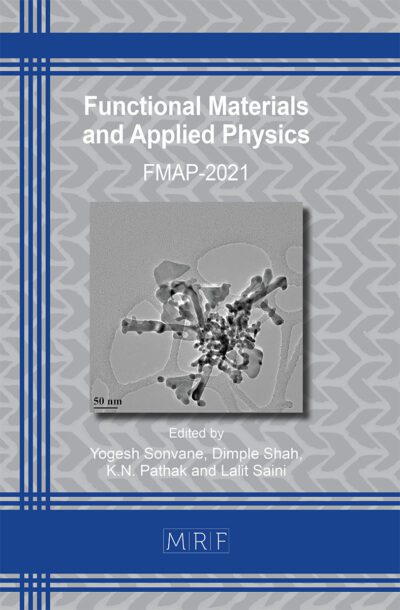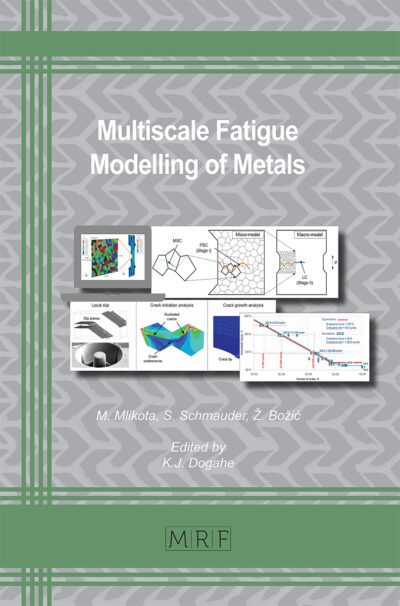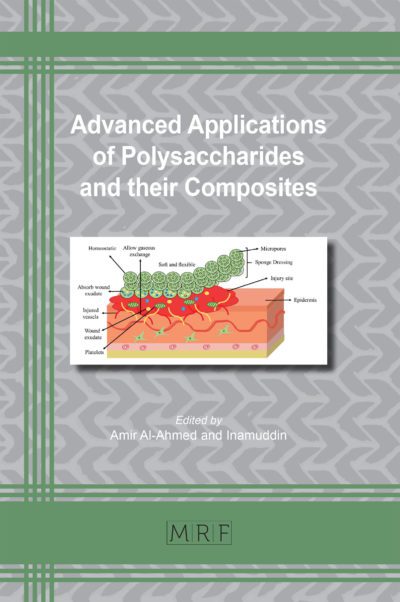Differential thermal analysis to assist the design of corrosion-resistant high entropy alloys for laser powder bed fusion
SEIDOU Abdul Herrim, BLONDIAU Catherine, DEDRY Olivier, OÑATE Angelo, TUNINETTI Víctor, TCHOUFANG TCHUINDJANG Jérôme, MERTENS Anne
download PDFAbstract. In this study, Al, Cr, Fe, Mn, and Ni are selected and pure elemental powders were used to prepare several medium entropy alloys (MEAs) and high entropy alloys (HEAs). Differential Thermal Analysis (DTA) is used as a tool for pre-screening of the compositions suitable to design corrosion-resistant alloys for Laser Powder Bed Fusion (LPBF). The advantage of DTA lies in the precise temperature control and in the small quantity of powder necessary to perform the test in near-equilibrium conditions. The powder mixtures were heated up to 1550°C, fully melted, and then cooled down to room temperature at 5°C/min. The results of DTA are used as reference to understand the complex microstructures obtained using LPBF. Microstructure analysis of DTA samples by combining Optical Microscopy (OM) and Scanning Electron Microscopy (SEM) helped to confirm the phase prediction theories. Most of the samples showed a heterogeneous structure with Ni-Al rich B2 phase, Fe-Cr rich BCC and FCC phases. The spinodal decomposition of the BCC phase was also observed in the equimolar AlCrFeMnNi sample. The Valence Electron Concentration (VEC) theory was verified and the partitioning of the elements between the phases was investigated.
Keywords
High Entropy Alloys, Alloy Design, DTA, Solidification Path, Microstructure
Published online 4/24/2024, 10 pages
Copyright © 2024 by the author(s)
Published under license by Materials Research Forum LLC., Millersville PA, USA
Citation: SEIDOU Abdul Herrim, BLONDIAU Catherine, DEDRY Olivier, OÑATE Angelo, TUNINETTI Víctor, TCHOUFANG TCHUINDJANG Jérôme, MERTENS Anne, Differential thermal analysis to assist the design of corrosion-resistant high entropy alloys for laser powder bed fusion, Materials Research Proceedings, Vol. 41, pp 353-362, 2024
DOI: https://doi.org/10.21741/9781644903131-40
The article was published as article 40 of the book Material Forming
![]() Content from this work may be used under the terms of the Creative Commons Attribution 3.0 license. Any further distribution of this work must maintain attribution to the author(s) and the title of the work, journal citation and DOI.
Content from this work may be used under the terms of the Creative Commons Attribution 3.0 license. Any further distribution of this work must maintain attribution to the author(s) and the title of the work, journal citation and DOI.
References
[1] I. Ribeiro, F. Matos, C. Jacinto, H. Salman, G. Cardeal, H. Carvalho, R. Godina, P. Peças, Framework for life cycle sustainability assessment of additive manufacturing, Sustainability, 12 (2020) 929. https://doi.org/10.3390/su12030929
[2] T.T. Wohlers, Wohlers report 2010: additive manufacturing state of the industry annual worldwide progress report, Wohlers Associates, 2010.
[3] F. Bartolomeu, M. Gasik, F.S. Silva, G. Miranda, Mechanical Properties of Ti6Al4V Fabricated by Laser Powder Bed Fusion: A Review Focused on the Processing and Microstructural Parameters Influence on the Final Properties, Metals 12 (2022) 986. https://doi.org/10.3390/met12060986
[4] M.N. Dogu, E. McCarthy, R. McCann, V. Mahato, A. Caputo, I.U. Ahad, D. Brabazon, Digitisation of metal AM for part microstructure and property control, Int. J. Mater. Form. 15, 30 (2022). https://doi.org/10.1007/s12289-022-01686-4
[5] W.E. King, A.T. Anderson, R.M. Ferencz, N.E. Hodge, C. Kamath, S.A. Khairallah, A.M. Rubenchik, Laser powder bed fusion additive manufacturing of metals: physics, computational, and materials challenges, Appl. Phys. Rev. 2. (2015). https://doi.org/10.1063/1.4937809
[6] S. Chowdhury, N. Yadaiah, C. Prakash, S. Ramakrishna, S. Dixit, L.R. Gupta, D. Buddhi, Laser powder bed fusion: a state-of-the-art review of the technology, materials, properties & defects, and numerical modelling, J. Mater. Res. Technol. 20 (2022) 2109-2172
[7] R. Pal, A. Basak, Linking powder properties, printing parameters, post-processing methods, and fatigue properties in additive manufacturing of AlSi10Mg, Alloys 1 (2022) 149-179.
[8] J.W. Yeh, S.K. Chen, S.J. Lin, J.Y. Gan, T.S. Chin, T.T. Shun, S.H. Tsau, S.Y. Chang, Nanostructured high-entropy alloys with multiple principal elements: novel alloy design concepts and outcomes, Adv. Eng. Mater. 6 (2004) 299–303. https://doi.org/10.1002/adem.200300567
[9] B. Cantor, I.T.H. Chang, P. Knight, A.J.B. Vincent, Microstructural development in equiatomic multicomponent alloys, Mater. Sci. Eng. 375–377 (2004) 213–218.
[10] Y. Zhang, T.T. Zuo, Z. Tang, M.C. Gao, K.A. Dahmen, P.K. Liaw, Z.P. Lu, Microstructures and properties of high-entropy alloys, Prog. Mater Sci. 61 (2014) 1–93.
[11] S. Guo, C. Ng, J. Lu, C.T. Liu, Effect of valence electron concentration on stability of fcc or bcc phase in high entropy alloys, J Appl Phys. 109. (2011).
[12] D.B. Miracle, O.N. Senkov, A critical review of high entropy alloys and related concepts, Acta Mater. 122 (2017) 448–511. https://doi.org/10.1016/j.actamat.2016.08.081
[13] W. Zhang, A. Chabok, B.J. Kooi, Y. Pei, Y., Additive manufactured high entropy alloys: A review of the microstructure and properties, Mater. Des., 220 (2022) 110875. https://doi.org/10.1016/j.matdes.2022.110875
[14] X. Yang, Y. Zhang, Prediction of high-entropy stabilized solid-solution in multi-component alloys, Mater. Chem. Phys. 132 (2012) 233–238.
[15] B.S. Li, Y.P. Wang, M.X. Ren, C. Yang, H.Z. Fu, Effects of Mn, Ti and V on the microstructure and properties of AlCrFeCoNiCu high entropy alloy, Mater. Sci. Eng. 498 (2008) 482-486. https://doi.org/10.1016/j.msea.2008.08.025
[16] A. Inoue, B. Shen, A. Takeuchi, Developments and applications of bulk glassy alloys in late transition metal base system, Mater. Trans. 47 (2006) 1275-1285.
[17] Y. Shi, B. Yang, P.K. Liaw, Corrosion-resistant high-entropy alloys: A review, Metals 7 (2017). https://doi.org/10.3390/met7020043.
[18] J. Tamminen, Thermal analysis for investigation of solidification mechanisms in metals and alloys, Dept. of Structural Chemistry, University of Stockholm, Sweden. (1988).
[19] D.M. Stefanescu, Thermal analysis-theory and applications in metalcasting, Int. J. Met. 9. (2015). https://doi.org/10.1007/BF03355598
[20] T. Maurizi Enrici, O. Dedry, F. Boschini, J.T. Tchuindjang, A. Mertens, Microstructural and Thermal Characterization of 316L + WC Composite Coatings Obtained by Laser Cladding, Adv. Eng. Mater. 22. (2020). https://doi.org/10.1002/adem.202000291
[21] T. Maurizi Enrici, A. Mertens, M. Sinnaeve, J.T. Tchuindjang, Elucidation of the solidification sequence of a complex graphitic HSS alloy under a combined approach of DTA and EBSD analyses, J. Therm. Anal. Calorim. 141 (2020) 1075–1089. https://doi.org/10.1007/s10973-019-09093-9
[22] A. Munitz, L. Meshi, M.J. Kaufman, Heat treatments’ effects on the microstructure and mechanical properties of an equiatomic Al-Cr-Fe-Mn-Ni high entropy alloy, Mater. Sci. Eng. 689 (2017) 384–394. https://doi.org/10.1016/j.msea.2017.02.072
[23] E. Ananiadis, K. Lentzaris, E. Georgatis, C. Mathiou, A. Poulia, A.E. Karantzalis, AlNiCrFeMn equiatomic high entropy alloy: a further insight in its microstructural evolution, mechanical and surface degradation response, Met. Mater. Int. 26 (2020) 793–811.
[24] Y. Lu, Y. Dong, S. Guo, L. Jiang, H. Kang, T. Wang, B. Wen, Z. Wang, J. Jie, Z. Cao, H. Ruan, T. Li, A promising new class of high-temperature alloys: Eutectic high-entropy alloys, Sci. Rep. 4. (2014). https://doi.org/10.1038/srep06200
[25] A. Oñate, J.P. Sanhueza, D. Zegpi, V. Tuninetti, J. Ramirez, C. Medina, M. Melendrez, D. Rojas, Supervised machine learning-based multi-class phase prediction in high-entropy alloys using robust databases, J. Alloys Compd. 962 (2023) 171224. https://doi.org/10.1016/j.jallcom.2023.171224














